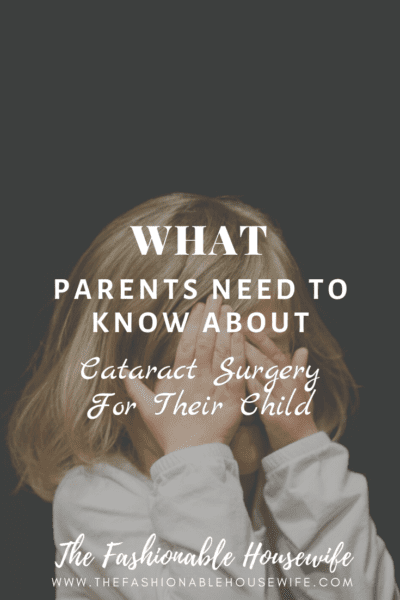
A lot of us think that cataracts only affect adults that are well-advanced in age. The truth is, this condition can happen to anyone at any age. Babies and children are not exempted from this.
Learning that their child might be developing or is already suffering from cataract can cause major distress to parents. Of course, no one wants to lose their vision, and when it comes to children’s eyesight, failing to treat cataract can cause long term vision problems.
Pediatric cataract is the term used for this eye disease contracted by children. If you are a parent who has a child that has or may be at risk of developing this condition, this post discusses what you need to know about this disease, as well as cataract surgery costs in Singapore. An expert in eye care, Dr. Claudine Pang, authors this post in the hopes of educating parents on how they can help their children overcome cataract.
Here’s what every parent needs to know about cataract surgery for their child:
Cataract: What is it exactly?
A cataract is a condition that develops in the lens of the eye that causes clouding and blurring of its vision. Cataracts can either affect one or both eyes in children. In younger children, it can prove to be a challenge to distinguish its symptoms.
Causes of cataract in children
The existence or development of a cataract in one or both eyes of your child is caused by different reasons. The main cause is usually unknown in a majority of cases, but for those that have been determined the reasons may be either of the following rare causes:
- Diabetes – A condition that causes high blood sugar level.
- Eye trauma – May be caused by injury or eye surgery.
- Galactosaemia – A condition that happens when the body is unable to break down sugar galactose. Sugar galactose is a by-product of lactose, which is the sugar found in milk.
- Genetic conditions – Cataract happens when a flawed gene is received by the child from their parents that leads to the lens’ improper development.
- Pregnancy infections – Sickness or infection suffered by pregnant women can have an effect to the unborn child that they are carrying. These are the infections that can put a newborn baby at high risk of having cataracts: chickenpox, cytomegalovirus (CVM), german measles, herpes simplex virus, and toxoplasmosis.
- Toxocariasis – A rare infection that comes from animal parasites.
Types of cataract in children
Cataracts in children are determined in two types:
- Acquired cataracts – Otherwise known as infantile or juvenile cataracts, this type usually develops after the child has been born. Most often, this is due to diabetes, galactosaemia, eye trauma, or toxocariasis.
- Congenital cataracts – This type of cataracts is present at birth. Congenital cataracts can be caused by genetics or infections during pregnancy.
Symptoms of cataracts in children
As previously mentioned, it may not be easy to determine the presence of cataracts in children. However, some signs can be a giveaway that they may have developed this condition. The symptoms include:
- A condition called strabismus or squint, wherein one of the child’s eye is turned to different directions
- A condition called nystagmus, which causes uncontrolled and rapid eye movements
- A pupil that appears to be coloured white or grey
- Difficulty in seeing clearly and properly
What to do to check cataracts in children
For babies, having your child undergo a newborn screening is highly advised. During this physical examination, your child’s eyes will be checked based on how they appear in general and their movement. A test called “red reflex” is usually done. This requires the use of a bright light that is transmitted through all parts of the eye that are transparent. Any blockage in the eye that can be a form or cause the eye to function normally is determined when the results of the red reflex is abnormal. If red reflex is absent or weak, then this may mean that the lens is clouded.
For toddlers and older children, you may visit your GP to have your child’s eyes checked, especially if you suspect that they may have vision problems.
In case the newborn screening or vision test results find that your child may have cataracts, expect to be referred to an ophthalmologist for further treatments.
Cataracts surgery cost in Singapore
In general, cataracts surgery in Singapore can cost you anywhere from $1,500 to $8,000. The cost is influenced by other factors, such as consultation fees, anaesthetist and surgeon fees, surgical facility fees, lens implant fees, and vision tests. Surgery alone is about $3,000 to $5,000.
Where your child gets the surgery can also have an impact on costs. Surgeries done in private hospitals or clinics can cause around $4,000 to $8,000 per eye. Rates in public hospitals are comparably cheaper due to government subsidy. Public hospitals usually charge anywhere from $800 to $1,200 per eye.
Cataract surgery in Singapore is Medisave claimable. Eligible patients can claim up to $2,150 to lessen the cost of their cataract surgery. This is applicable for both public hospitals and private hospitals or clinics. Aside from Medisave, private health insurance policies normally cover this procedure, but the reimbursable amount highly depends on the patient’s insurance policy coverage.



